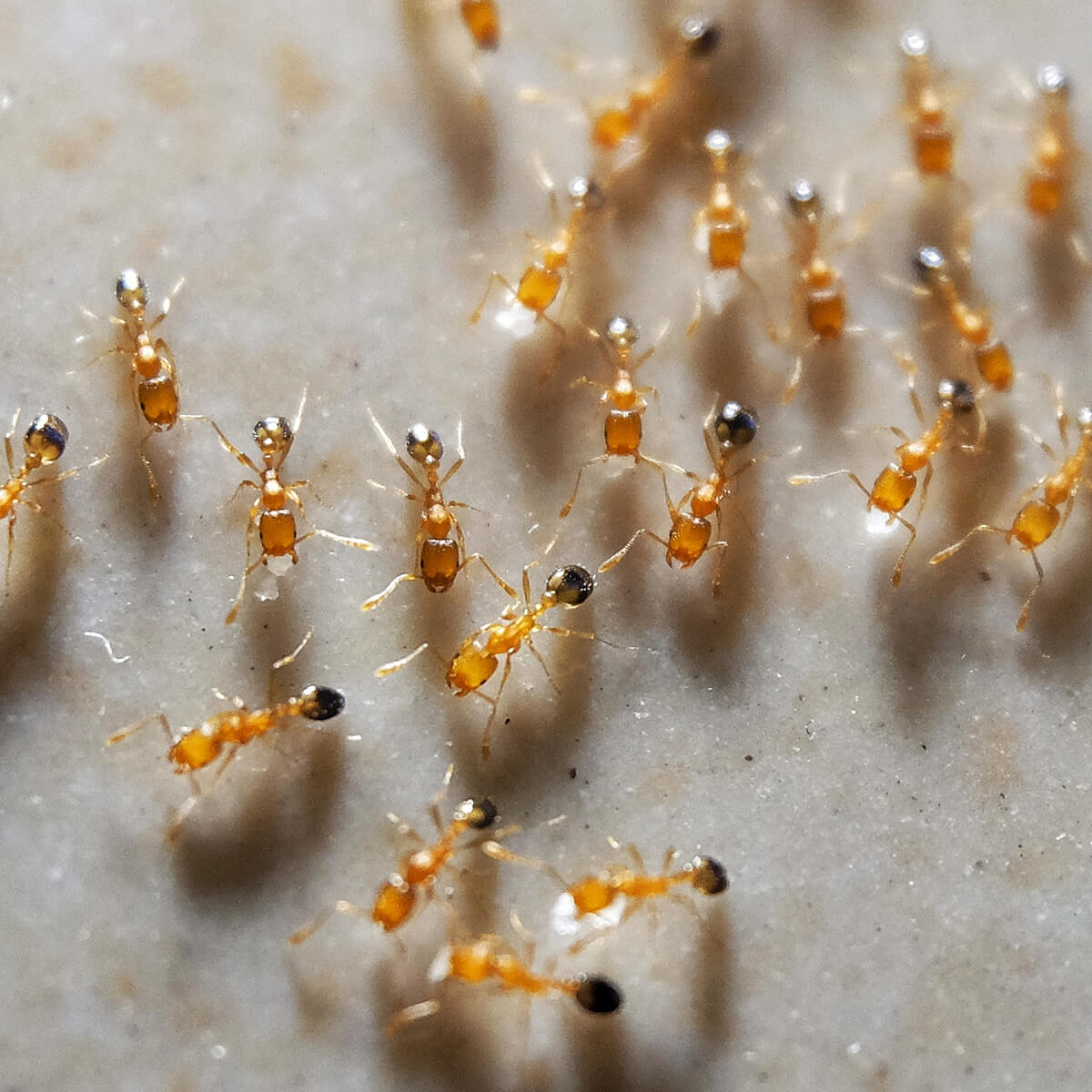Pharaoh Ants
The pharaoh ant (Monomorium pharaonis) is a small ant that can be easily recognized. The workers are usually no bigger than 2mm and have light yellow to brown bodies. The pharaoh ants have more than one queen in their colonies, which allows them to divide and form new colonies really quickly.
Pharaoh ants characteristics

- Colour: Golden yellow to brown, with a darker abdomen
- Legs: 6
- Body: Monomorphic, segmented body, the thorax has no spines
- Size: Approximately 2mm long
- Antennae: 2 antennas with bigger segments in the end
- Bites or stings: they don’t bite or sting
- Danger: Can spread salmonellosis and dysentery
- Region: Australia
If an ant infection occurs, you need to thoroughly inspect the property and throw away all infested food, as these little ants can spread dysentery and salmonellosis. Commercial buildings, especially hospitals are of heightened concern, as the ants can infect sanitary rooms and equipment and can even enter surgical wounds.
Pharaoh ant life cycle
- Pharaoh ants have multiple queens within the colony. When disturbed, they easily split their colony and build a nest somewhere else. The queens can lay hundreds of legs in their lifetime.
- Queens hatch 10-12 eggs per batch at the beginning of the production period and around 5-7 in the end.
- Eggs hatch as larvae in 5-7 days, depending on the temperature inside the nest.
- The larval period is 18-20 days, it takes around 38-45 days for the ants to fully mature.
Get to know also the lifecycle of the Carpenter ant.
Pharaoh ant habits
- Pharaoh ants are a tropical species, but they can live in buildings with artificial heating. They build nests in walls, cabinets, cracks in the foundation and even between books, shelves and other dark and undisturbed areas in your home.
- The pharaoh ants communicate through pheromones. They use attractive chemicals to build trails to food and water sources. The scent is so strong it remains detectable even if ants don't use it for a couple of days.
- The pharaoh diet includes dead insects, meat, and fats, but they prefer sweets.
Check out: Ant Proofing Tips
Facts about pharaoh ants
- Pharaoh ants are very social with other colonies of pharaoh ants. They are unicolonial, meaning they are not aggressive towards other colonies.
- Pharaoh ants have a stinger but there is no need to worry. The little buggers can’t harm you at all. Their sting is non-functional. It only serves the purpose of producing hormones.
- Like all ants, workers feed their queen. Unlike all ants, workers can refuse food to their queen. This might result in the death or removal of the ant from the colony but it’s something that they do.
- They have pretty short lifespans. Workers live for around 10 weeks while queens have a lifespan of around 12 months.
- Their sight is poor, they possess on average 32 ommatidia.
- The pharaoh ants have stingers, but they only use it to generate pheromones.